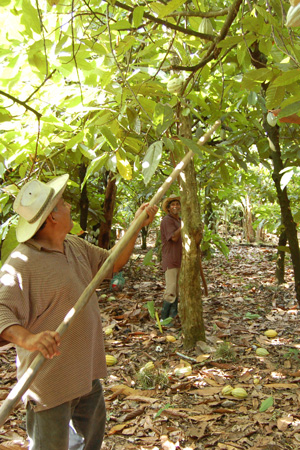Action of the Carlos Slim Foundation to address climate change and species conservation in Mexico
The climate change (CC) we are now facing represents one of the primary threats to the future of world biodiversity.
That threat presents new challenges for conservation biology, such as adapting its classic tools and principles in order to be able to analyze the different responses of organisms to CC, as well as their vulnerability to it, which is fundamental for effectively preserving species (above all endangered species) and their habitats.
In the specific case of Mexico, the efforts to incorporate measures for the management and handling of the natural resources are reflected in different planning instruments, which include the Climate Change Act (2012), the National Climate Change Strategy (vision 10-20-40), the Special Climate Change Program (2014-2018) and the Climate Change Strategy for the Protected Natural Areas: A Call for Mexican Resilience 2015-2020. These instruments recognize the importance of addressing the challenge CC represents in species conservation. In addition, they emphasize the challenge CC represents, in order to convert it into an opportunity to preserve the natural wealth, make use of it sustainably and increase social welfare.

With the above in mind, one of the primary measures for adapting to climate change is to maintain the functionality of the ecosystems through their conservation and restoration. The protected natural areas, as well as the identification of areas important for the conservation of biodiversity have been and will continue to be key elements of the conservation strategies, whose importance is reflected in the international commitments and the goals associated with those commitments.
Generally, implementing those conservation strategies, together with local sustainable use and management, enables the promotion of the maintenance of biodiversity and the functionality of the ecosystems, which results in environmental stability. In the last few years, there have been various efforts to develop a new frame of reference for conservation and sustainable management in our country, encouraging that the actions carried out consider CC impacts and possible ecosystem changes. In this regard, it is crucial to use the best scientific information available and generate specific information in the local sphere, in order to develop strategies and actions that allow us to protect our biodiversity.
Based on the above and with the goal of implementing functional strategies that favor the biodiversity of Mexico, the Carlos Slim Foundation (FCS) created an Alliance with the World Wildlife Fund (WWF) through which work in six priority regions (Mesoamerican Reef, Chihuahuan Desert, Gulf of California, Monarch Butterfly, Oaxaca and Chiapas) with local, national and international partners, to promote sustainable development and conservation of biodiversity. In addition to this, it collaborates with federal and state governmental agencies so the investments contribute to fulfilling the national and regional goals. The Alliance also works on Climate Change at the national level.
This initiative has supported 63 local organizations on 104 projects throughout Mexico, and has permitted the creation of the WWF-Telcel app, which contributes information on three endangered species that are protected by the alliance: Great White Shark, Monarch Butterfly and Jaguar.
Another strategy of FCS in this area is the Mexican Biodiversity Collection, a series of books published to disseminate information on the biological diversity of Mexico, its natural wealth, its importance, the threats it faces and the possibilities for its long-term preservation. The collection has published a total of 10 volumes so far.
Finally, and in Alliance with the National Commission for the Knowledge and Use of Biodiversity (CONABIO), FCS created the online platform Naturalista, in which the user can learn about the great biodiversity of Mexico and the world, sharing observations of nature and meeting other enthusiasts and professionals in the area.

Also as part of this initiative, the app iNaturalist was created in collaboration with the California Academy of Sciences, which permits uploading, identifying and searching observations of the natural world with photos and GPS location.
Training has been given on the use of the platform and the app in 100 rural communities, including the states of Oaxaca, Chiapas, Tabasco, Campeche and Quintana Roo.
As of today, 2, 693, 755 species observations have been registered on the platform, including the discovery of new species.
Sources: CONABIO | CONANP | RESEARCHGATE


